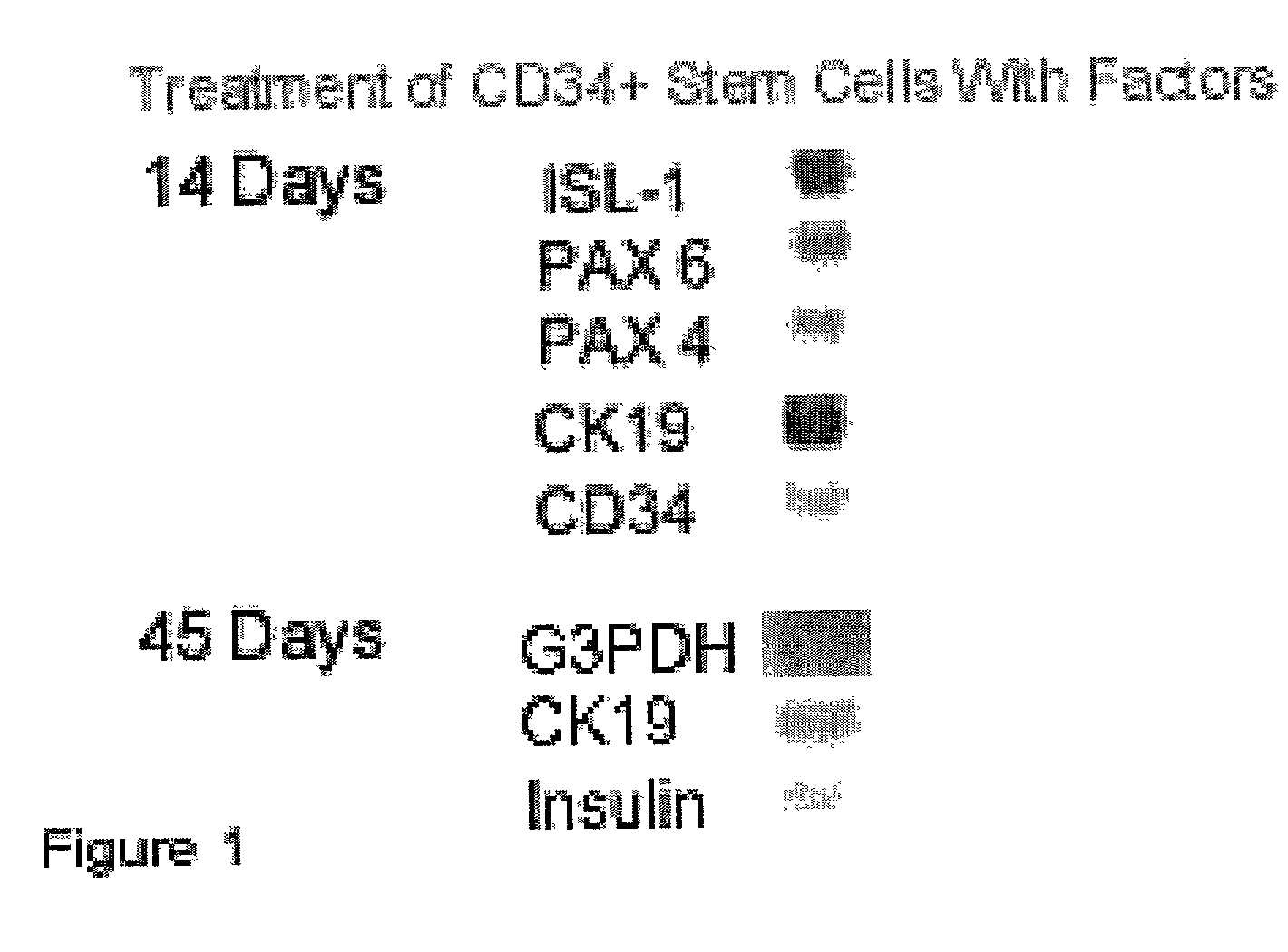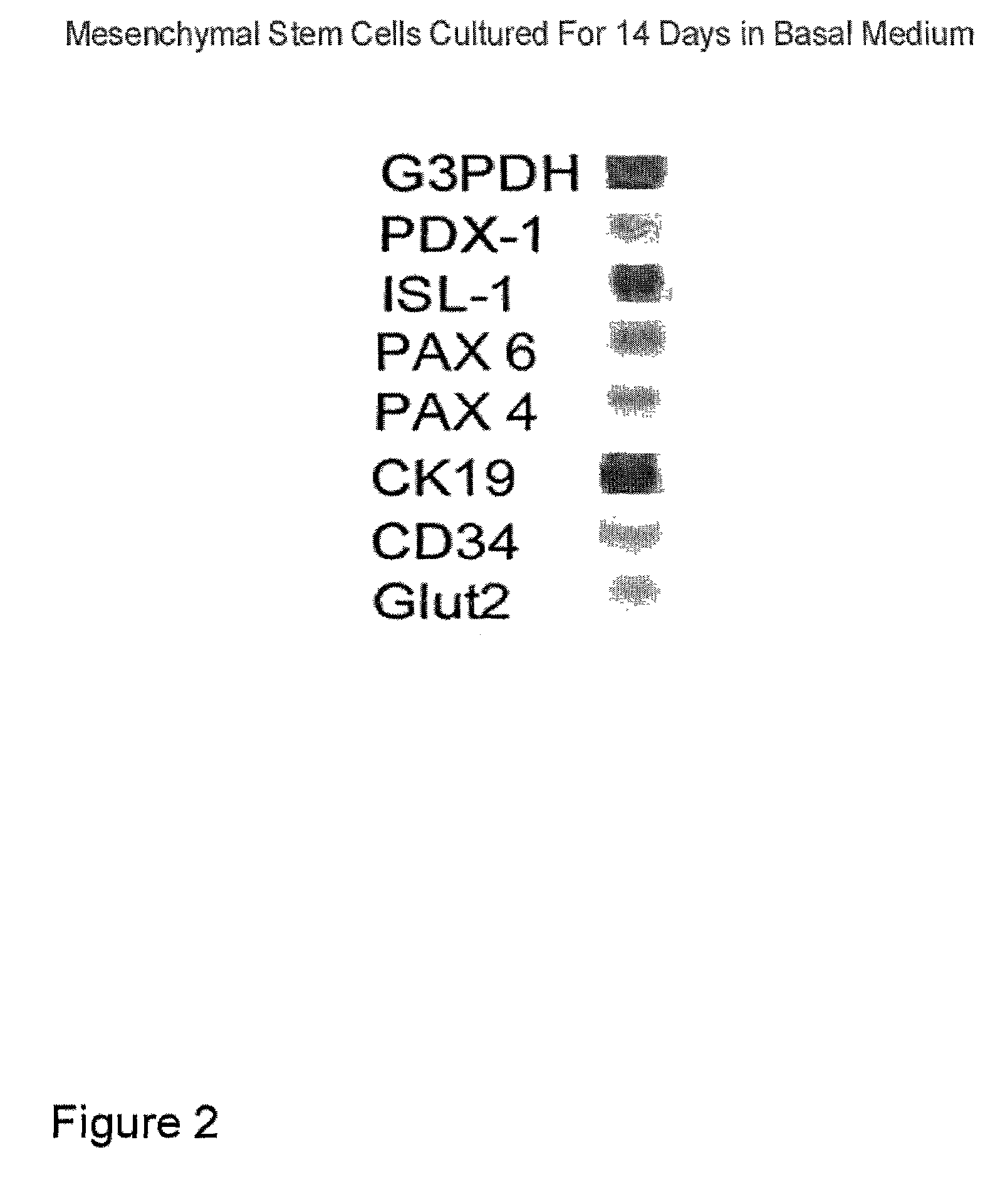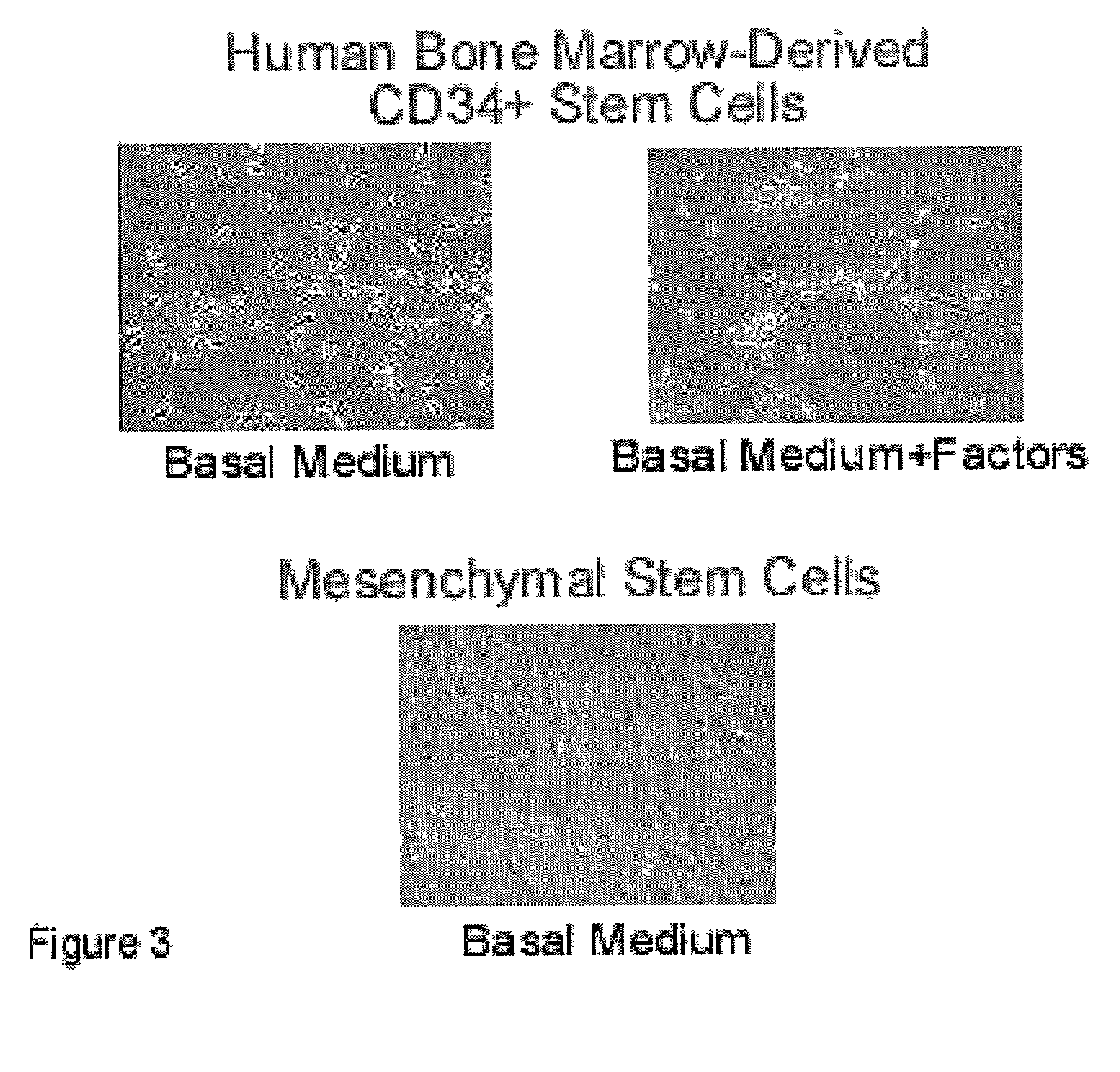Method for transdifferentiation of non-pancreatic stem cells to the pancreatic differentiation pathway
a non-pancreatic stem cell and pancreatic differentiation technology, applied in the field of culture methods for the transdifferentiation of non-pancreatic stem cells, can solve the problems of affecting the normal affecting the function of the pancreas, so as to achieve the effect of reducing the risk of diabetes
- Summary
- Abstract
- Description
- Claims
- Application Information
AI Technical Summary
Benefits of technology
Problems solved by technology
Method used
Image
Examples
example
[0059]Upon receipt of the HSCs, they were cultured in basal medium (Table 1A) for two days. After two days of rest, the cells were split into groups and cultured in various factors. After 14 and 45 days, RNA was extracted for RT-PCR / Southern blot analyses to determine the expression of genes relevant to pancreas organogenesis, and not known to be involved in hematopoietic or mesenchymal pathways of differentiation. These genes include Isl-1, Pdx-1, Pax -4, Pax-6, Glut-2 and insulin. Human bone marrow-derived CD34+ stem cells treated with basal medium containing various factors (Table 1B) for 2 weeks expressed mRNAs for Isl-1, Pax-6, CK-19 along with CD34 (FIG. 1). The continuous culture of cells up to 45 days resulted in the expression of mRNA for insulin and maintenance of CK19 (FIG. 1).
[0060]Interestingly, human bone marrow-derived CD34+ HSCs that contained MSCs as well, after 14 days of culture period in basal medium alone (Table 1A), expressed mRNAs for Pdx-1, Isl-1, Pax-4, Pax-...
PUM
| Property | Measurement | Unit |
|---|---|---|
| Time | aaaaa | aaaaa |
| Time | aaaaa | aaaaa |
Abstract
Description
Claims
Application Information
 Login to View More
Login to View More - R&D
- Intellectual Property
- Life Sciences
- Materials
- Tech Scout
- Unparalleled Data Quality
- Higher Quality Content
- 60% Fewer Hallucinations
Browse by: Latest US Patents, China's latest patents, Technical Efficacy Thesaurus, Application Domain, Technology Topic, Popular Technical Reports.
© 2025 PatSnap. All rights reserved.Legal|Privacy policy|Modern Slavery Act Transparency Statement|Sitemap|About US| Contact US: help@patsnap.com



